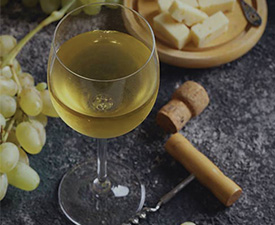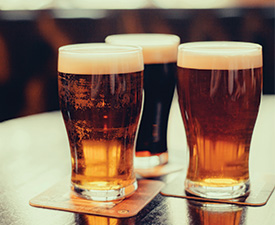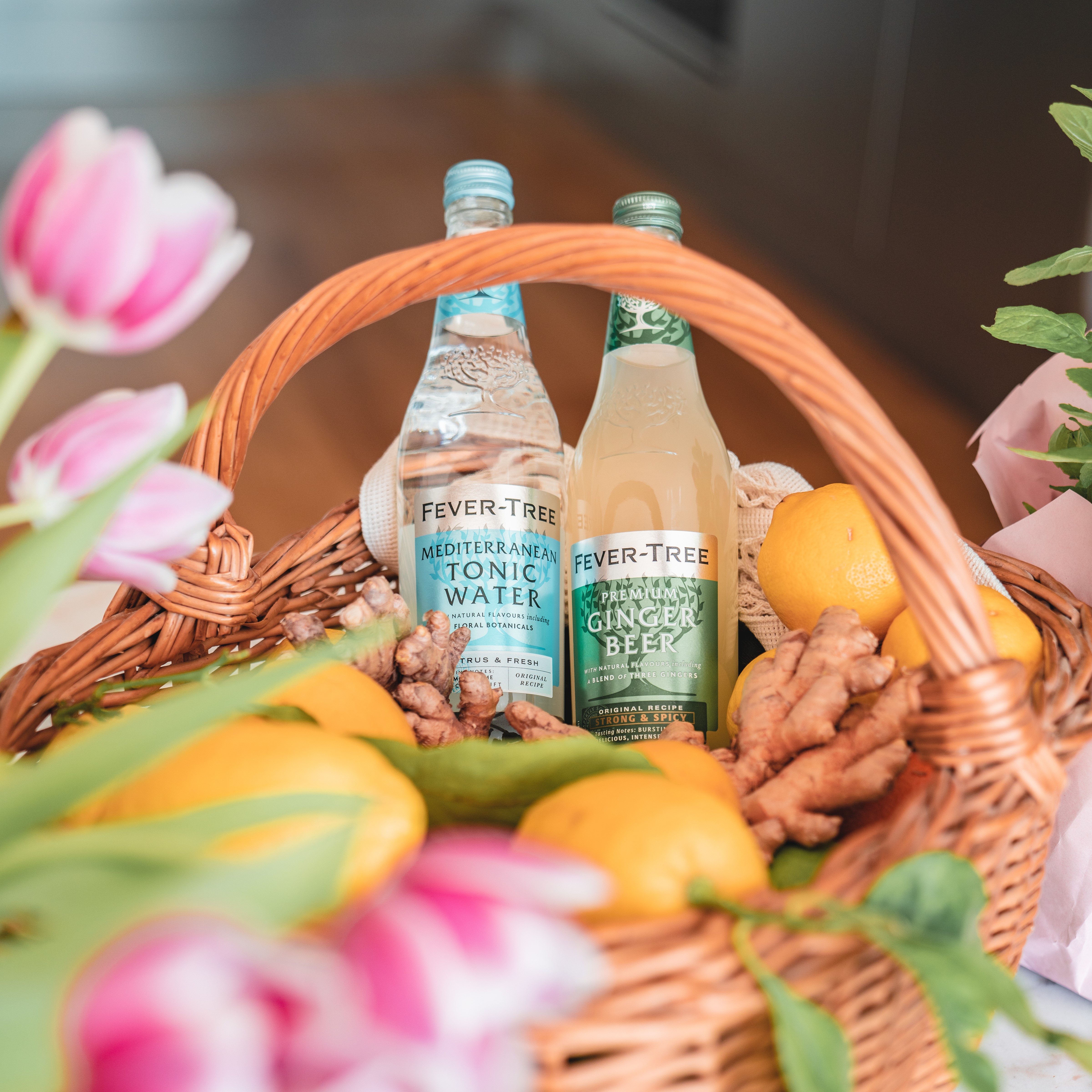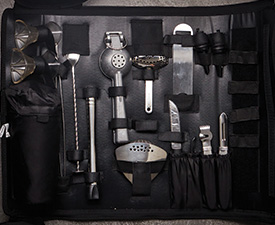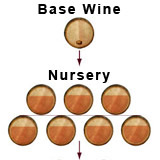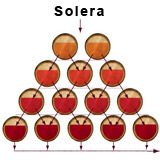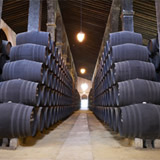The Solera process is the aging of liquids like wine, vinegar and brandy, by fractional blending in such a way that the finished product is a mixture of ages, with the average age gradually increasing as the process continues over many years. A solera is literally the set of barrels or containers used in the process. Products which are often solera aged include; Sherry, Madeira, Marsala, Mavrodafni, Muscat, Balsamic, Commandaria, Sherry vinegars, Spanish brandy and rums.
This process known as solera (a Spanish word), was developed by the producers of sherry. In a Spanish sherry solera, the vintner may transfer up to a third of each barrel, each year. A solero sherry has to be at least three years old when bottled. The traditional Sherry Solera is exposed to the sun, hence the name. The warmth of the sun encourages an active fermentation and aging. This unique blending system consists of several rows of small oak barrels stacked upon one another grouped by vintages. The oldest is at the bottom and the most recent at the top.
At bottling, approximately one third of the contents of each of the barrels on the bottom level is removed. Sherry from the row immediately above will replace what was removed and so on until a complete transfer is made from top to bottom.
No container is ever drained, so some of the earlier product always remains in each barrel. This remnant diminishes to a tiny level, but there can be significant traces of product much older than the average, depending on the transfer fraction. In theory traces of the very first product placed in the solera may be present even after 50 or 100 years.
In Sicily, where Marsala wine is made, the system is called 'in perpetuum' (Latin - forever).
Some Sherry and especially Madeira can be labelled with the word 'Solera' and a date. This is a marketing strategy, as it simply means the year that the Solera was started, and the bottle may contain trace amounts from that year, at best.




